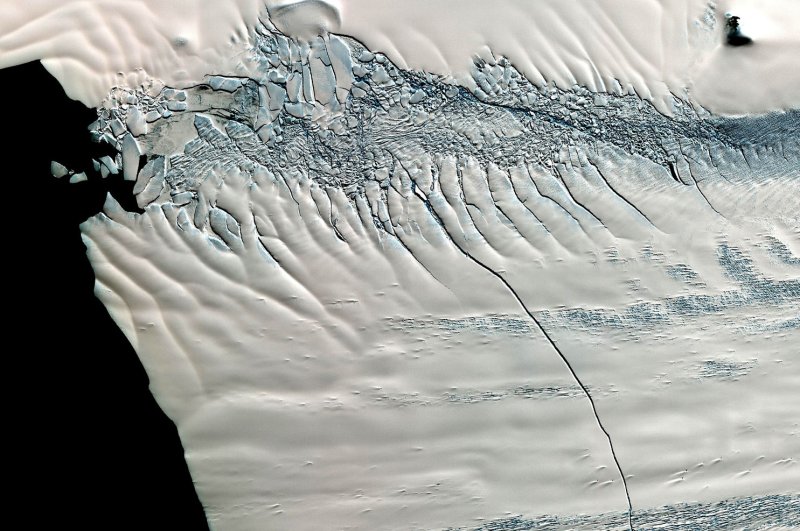Researchers found a surprisingly strong upward heat flow from geothermal sources beneath the West Antarctic Ice Sheet. File photo by UPI/ NASA |
License Photo
SANTA CRUZ, Calif., July 10 (UPI) -- A surprisingly high amount of geothermal heating has been measured underneath the West Antarctic Ice Sheet by researchers at the University of California, Santa Cruz.
Using a lengthy probe, researchers measured the flow of heat in the sediments below the ice sheet. A significant flow of heat is traveling upward form the geothermal sources toward the base of the ice.
The significant heat rate doesn't explain recent ice loss episodes detailed by other research projects, as it is not a new phenomenon.
"The ice sheet developed and evolved with the geothermal heat flux coming up from below -- it's part of the system," Andrew Fisher, professor of Earth and planetary sciences at UC Santa Cruz, said in a press release. "But this could help explain why the ice sheet is so unstable. When you add the effects of global warming, things can start to change quickly."
Fisher is the lead author of a new study on the phenomenon, published this week in the journal Science Advances.
The geothermal heating also explains the presence of sizable subglacial lakes that have been recently detailed by researchers. Such heating is also likely responsible for the high flow of glacial streams present on the ice sheet. These streams provide lubrication that can accelerate the loss of ice.
Researchers say the measurements were only recorded at a single location beneath the ice sheet.
"This is the first geothermal heat flux measurement made below the West Antarctic ice sheet, so we don't know how localized these warm geothermal conditions might be. This is a region where there is volcanic activity, so this measurement may be due to a local heat source in the crust," Fisher said.
The geothermal heat flux was measured at 285 milliwatts per square meter, which Fisher likened to the heat put off by a single Christmas light every square meter.
Researchers trying to predict sea level rise argue they're handicapped by an inability to account for the complex systems that govern polar ice sheets. The latest research may offer a bit more clarity.
"It is important that we get this number right if we are going to make accurate predictions of how the West Antarctic ice sheet will behave in the future, how much it is melting, how quickly ice streams flow, and what the impact might be on sea level rise," said study co-author Tulaczyk Slawek Tulaczyk, professor of Earth and planetary sciences at UC Santa Cruz. "I waited for many years to see a directly measured value of geothermal flux from beneath this ice sheet."















